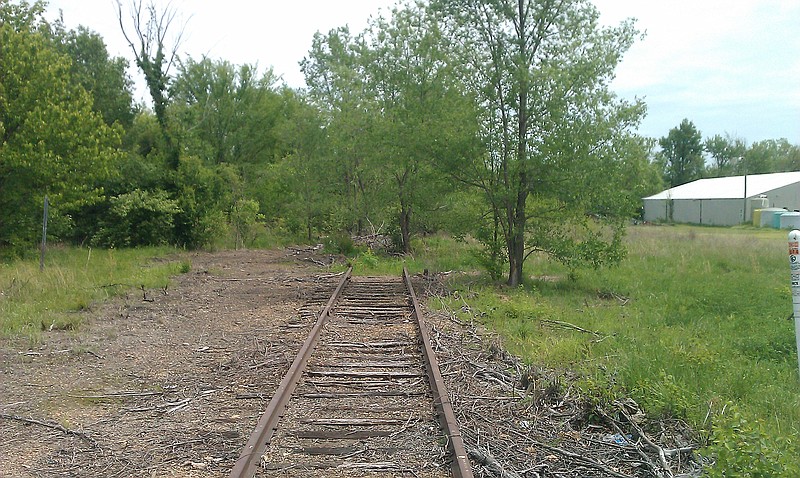Some Missouri landowners along the planned Rock Island Trail might now be able to get compensation for the use of their land. A U.S. Appeals Court ruled in February that the conversion of the trail, formerly a railroad line, constituted a legal "taking."
Judge Patricia E. Campbell-Smith of the U.S. Court of Appeals for the Federal Circuit Court ruled Feb. 13 in favor of landowners in Missouri who claimed their property was seized by the government to make the trail. Although some landowners will be entitled to restitution, the decision will not affect the development of the Rock Island Trail, which has been steadily progressing for the past several years.
Cases surrounding development of the trail have been underway for years. This suit, led by Meghan Largent of Lewis Rice LLC in St. Louis, had been stuck in litigation with the federal government since 2015.
"We went through more than six years of litigation, unfortunately. We had a back and forth with the federal government because they would not agree that, under Missouri law, this railroad held an easement and that it would have reverted back to these Missouri landowners upon abandonment," Largent said.
Largent and her firm had to file in Washington in order to qualify for a "Tucker Act" suit, which permits people to sue the government for more than $10,000.
Lewis Rice represents roughly 150 claiming landowners in their suit and there are around 300 landowners total across many suits from all firms. Due to the long litigation time, landowners must have already filed a claim in order to be compensated with the value of their property.
"That's one of the, I think, really unfortunate, short-sighted parts of this law is that people aren't given notice of their claim unless they hear about it from a lawyer, a neighbor or a newspaper. They might not even know what's going on because nothing's changed in their backyard," Largent said. "That's probably one of the most unfortunate things is that this went on so long, and we didn't even get a decision till after the statute of limitations passed."
Any restitution granted to landowners will not take funds away from the Rock Island Trail.
"It gets sort of characterized as being a lawsuit that's against the trail and that couldn't be farther from the truth," Largent said. "Whatever money my clients end up being paid is paid out of the judgment fund, which is simply a pot of money that Congress appropriates every year to pay the debts and liabilities of the United States."
The Missouri Department of Natural Resources (DNR) will continue to handle much of the funding and development of the trail. Some municipalities across the state have started to work on their sections of the trail on their own.
"Missouri has a long history of working with landowners (on these matters) and will continue to do so," said Mike Sutherland, the deputy director of the DNR.
In 2022, Parson asked for $69 million from the General Assembly to complete the trail. The funds were approved by the House, but failed to pass out of the Senate.
Some parts of the trail will be more costly to complete than others, according to Brent Hugh, the executive director of the Missouri Bicycle and Pedestrian Federation.
"Some (portions of the trail) could just get a road grader and some of the right gravel and you could just build them out very inexpensively. Another place has, maybe, some creeks and crossings so that would cost a little bit more to invest," Hugh said.
Places that would cost more to develop, like larger bridges and tunnels, could be big attractions for the trail. Hugh mentioned the Gasconade River bridge, a historic rail bridge that would require a lot of maintenance to be usable.
"People will come from across Missouri to see (the Gasconade River bridge) and walk and bike across it to see the beautiful Gasconade River valley in a way that you can't see it now, but it's, you know, like a mile long, and it's over 100 years old. I mean, that's going to need some money to develop," Hugh said.
Although many parts of the trail would be costly to develop, Hugh said, the challenges were "nothing insurmountable."
People in communities along the trail have had to turn to other sources of funding to complete the trail. A few cities, including Owensville and Eldon, have gotten grant funding at the local level to develop their respective sections of the trail.
According to Sutherland, DNR had recently received a $2.7 million grant to develop the trail.
The planned trail, which Gov. Mike Parson has publicly called for several times, would run through 10 counties, including Cole. The trail is partially complete and would connect Kansas City to the Ozarks, stretching from the Kansas City suburb of Raytown to Beaufort. If completed, the trail would stretch 144 miles.
In Windsor, the trail would link with the Katy Trail, another rail conversion trail in Missouri. Parson and other supporters of the trail have said the completed Rock Island Trail would make Missouri a leading hiking and biking destination in the United States.
"The Katy Trail is the most successful rail-to-trail (project) in the country," Sutherland said. "It draws people from not only the country but the world."
Some parts of the Rock Island Trail are already developed and completed. A portion from Raytown to Lee's Summit is completed and currently accessible. Another, larger, portion is completed from Pleasant Hill to Windsor. The rest of the trail is awaiting completion.

